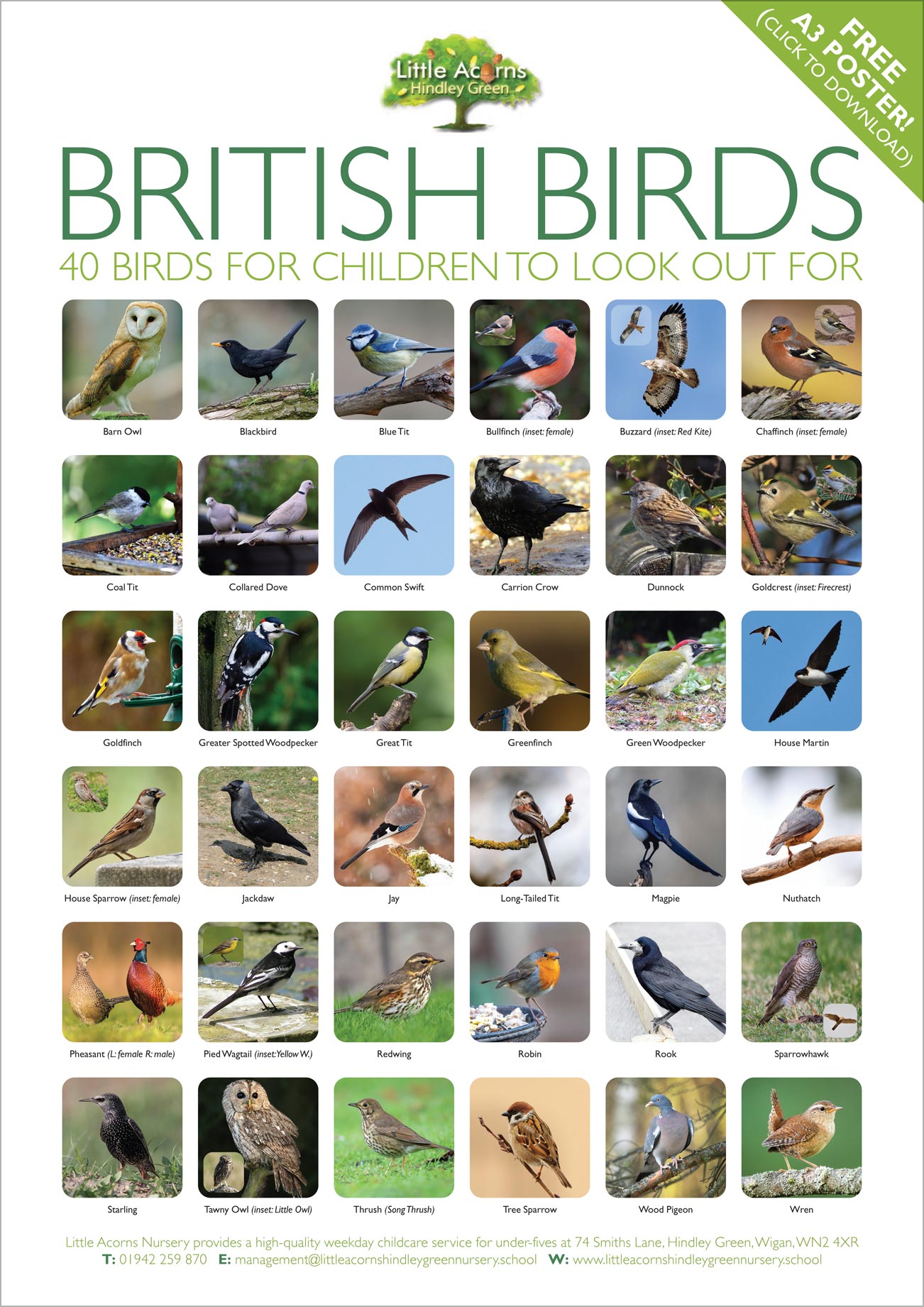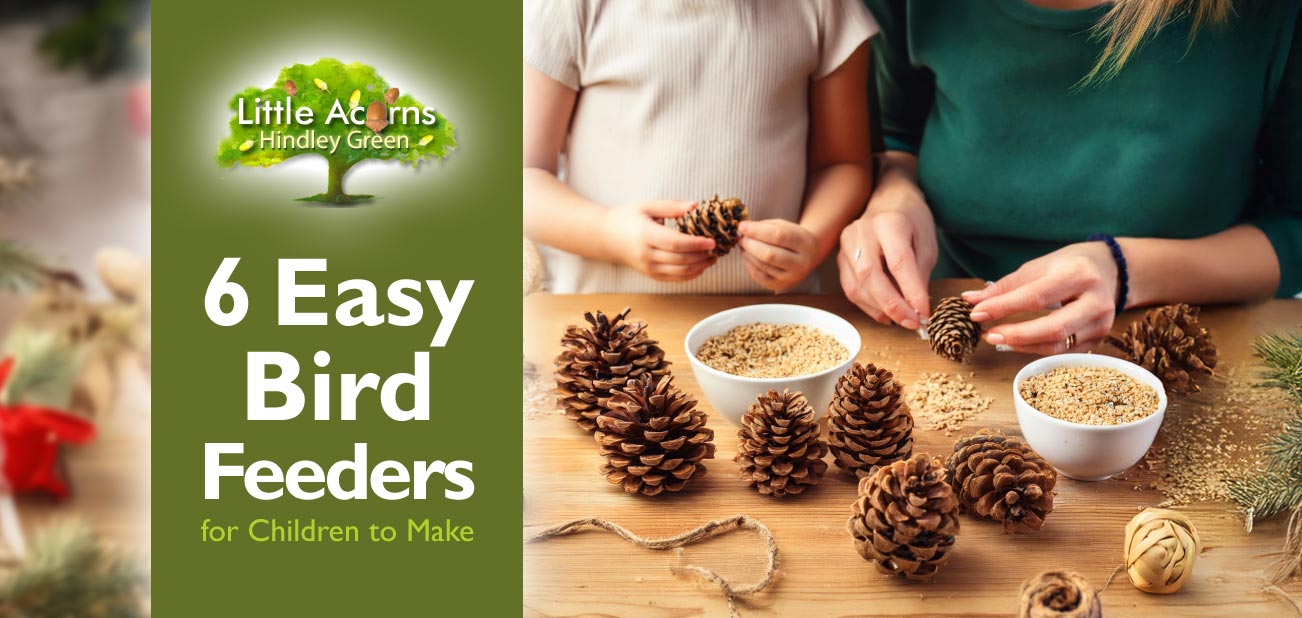
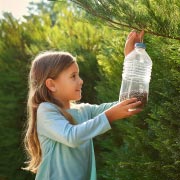 Once summer has gone, observant children will begin to notice a change in the behaviour of wild birds. Many of our feathered friends will begin migrating to warmer locations, evidenced by often noisy flocks heading south overhead. Those that stay in the UK, like robins and blackbirds, will soon find that all the wild berries, seeds, and grubs have been eaten — food becomes scarce as remaining supplies disappear in the run-up to winter. In view of this, wild birds will become more reliant on good-natured humans to ensure they still have enough food to eat over the colder months.
Once summer has gone, observant children will begin to notice a change in the behaviour of wild birds. Many of our feathered friends will begin migrating to warmer locations, evidenced by often noisy flocks heading south overhead. Those that stay in the UK, like robins and blackbirds, will soon find that all the wild berries, seeds, and grubs have been eaten — food becomes scarce as remaining supplies disappear in the run-up to winter. In view of this, wild birds will become more reliant on good-natured humans to ensure they still have enough food to eat over the colder months.
Luckily, families — and even children — are in a great position to help! By coming together to make and fill simple bird feeders, you will provide birds with a regular food source that will sustain them during a time when nature’s food sources are depleted. And, if children and families keep up the good work by refilling bird feeders with seeds and suchlike every day, they may even find they get to know some real ‘regulars’ over the winter. With all this in mind, today’s guide outlines 6 ways children and their families can construct easy-to-make bird feeders to help our feathered friends. They’re fun, creative, and are a wonderfully good thing for little ones to do for wildlife.
Peanut Garland Bird Feeders
• Difficulty level: simple! • Fun level: great fun!
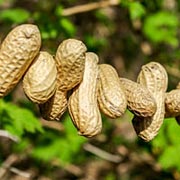 This simple type of bird feeder is quick and easy to make. Simply thread string or gardening twine through the outer husks of unroasted monkey nuts to form a garland. Holes can be made in the monkey nut husks using a small matchstick. Alternatively, if using something sharp like a darning needle, an adult should make the holes so that little ones don’t hurt themselves. Once a whole chain of monkey nuts is in line along the string, the ends can be tied between twigs, branches, or bushes, so the nuts dangle in a stretched arc. Blue tits will love pecking at the husks to get to the nuts inside!
This simple type of bird feeder is quick and easy to make. Simply thread string or gardening twine through the outer husks of unroasted monkey nuts to form a garland. Holes can be made in the monkey nut husks using a small matchstick. Alternatively, if using something sharp like a darning needle, an adult should make the holes so that little ones don’t hurt themselves. Once a whole chain of monkey nuts is in line along the string, the ends can be tied between twigs, branches, or bushes, so the nuts dangle in a stretched arc. Blue tits will love pecking at the husks to get to the nuts inside!
Apple Bird Feeder
• Difficulty level: super-simple! • Fun level: not the most exciting, but simple even for toddlers.
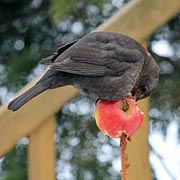 Apple bird feeders are by far the most simple to accomplish. In essence, they are simply an apple either dangling from a tree, bush, or fence, or are held high in the air from underneath by a vertical bamboo cane pushed into the ground. Whether the apple is dangled by string or held aloft by a cane, it’s best to expose some of the apple by removing some of the outer skin, so birds have a weak spot to begin feeding on. Check the apple daily to ensure it does not go mouldy; discard if so – mould can be dangerous to birds. (Adults should also supervise* children to keep them safe around hazards and other possible dangers, of course).
Apple bird feeders are by far the most simple to accomplish. In essence, they are simply an apple either dangling from a tree, bush, or fence, or are held high in the air from underneath by a vertical bamboo cane pushed into the ground. Whether the apple is dangled by string or held aloft by a cane, it’s best to expose some of the apple by removing some of the outer skin, so birds have a weak spot to begin feeding on. Check the apple daily to ensure it does not go mouldy; discard if so – mould can be dangerous to birds. (Adults should also supervise* children to keep them safe around hazards and other possible dangers, of course).
Milk/Juice Carton Bird Feeder
• Difficulty level: intermediate. • Fun level: super fun, especially if decorated!
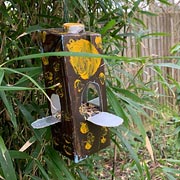 These bird feeders are extra fun because little ones can decorate them! You’ll first need an empty juice or milk carton. With help from an adult, rectangular or arc-shaped flaps should be cut on 3 or 4 sides of the carton, ensuring the bottom of the rectangle or arc is not cut. Crease and fold the flaps out at that lowest point, as shown in our example. The flaps provide a landing platform for birds, as well as access to the inside. That’s where the birdseed will go when the feeder is complete. After painting the exterior with a nice design and leaving it to dry, the carton bird feeder can be suspended by a string. This can be attached at the top, for example, by trapping it with the carton’s lid. Fill with birdseed to the level of the open flaps once suspended in place.
These bird feeders are extra fun because little ones can decorate them! You’ll first need an empty juice or milk carton. With help from an adult, rectangular or arc-shaped flaps should be cut on 3 or 4 sides of the carton, ensuring the bottom of the rectangle or arc is not cut. Crease and fold the flaps out at that lowest point, as shown in our example. The flaps provide a landing platform for birds, as well as access to the inside. That’s where the birdseed will go when the feeder is complete. After painting the exterior with a nice design and leaving it to dry, the carton bird feeder can be suspended by a string. This can be attached at the top, for example, by trapping it with the carton’s lid. Fill with birdseed to the level of the open flaps once suspended in place.
Plastic Bottle Bird Feeders
• Difficulty level: intermediate. • Fun level: great fun!
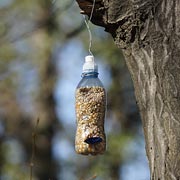
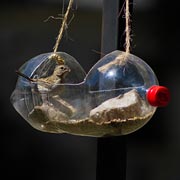
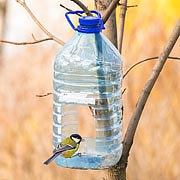
These use a similar approach to the carton feeders, although they are not so suited to painting. Empty plastic water bottles can be used as bird feeders in a variety of ways, as demonstrated in our examples above. As with the cartons, they’re suspended by a string. Two use one or more holes and flaps like the juice carton feeder above, while the other suspends the bottle on its side, as shown in the second image. These are great for bird feed or water, so long as they’re regularly checked and cleaned (under adult supervision) when needed. Please note: due to the type of plastic used, children should be careful of sharp edges. A nail file can be used to round off such edges, which will also protect birds. Adults also need to supervise* children and be mindful of possible choking hazards with many of these bird feeders.
Pine Cone Bird Feeders
• Difficulty level: intermediate. • Fun level: the most fun!
 Pine cone bird feeders are great fun for children! You first need to forage outdoors for a large pine cone. Ideally, it needs to have its many splines open, although that’s not critical. Children should smear peanut† butter all over the pine cone, ensuring it gets pushed into the cone’s many crevices. The whole thing should then be rolled around in a bowl of bird seeds, which will then stick to the sticky covering that was just applied. The completed pine cone bird feeder can then be suspended by string outdoors, somewhere suitable for the birds (usually at least 1.5m off the ground but under the protection of a tree canopy or similar so that feeding birds avoid attack from predators like sparrowhawks).
Pine cone bird feeders are great fun for children! You first need to forage outdoors for a large pine cone. Ideally, it needs to have its many splines open, although that’s not critical. Children should smear peanut† butter all over the pine cone, ensuring it gets pushed into the cone’s many crevices. The whole thing should then be rolled around in a bowl of bird seeds, which will then stick to the sticky covering that was just applied. The completed pine cone bird feeder can then be suspended by string outdoors, somewhere suitable for the birds (usually at least 1.5m off the ground but under the protection of a tree canopy or similar so that feeding birds avoid attack from predators like sparrowhawks).
Seed Cake Bird Feeders
• Difficulty level: intermediate. • Fun level: great fun!
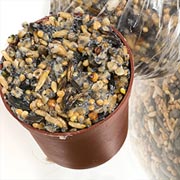 Seed cake bird feeders are a firm favourite for children to make. They’ll need some small, empty pots — plastic flowerpots would be perfect. With adult help, attach a string or garden twine to the base of the pot(s), for example, by threading it through the flowerpot drainage holes, and secure with a knot. Ensure that most of the string is left on the outside of the pot. Next children will need to mix bird seed in a suitable bowl with something to bind it together. For this part, adults will need to help by melting some lard† or beef suet† on the stove for children. They will then need to supervise to ensure it’s cool enough before children have access to it. Once mixed with bird seeds into a thick, gloopy mixture, children should fill the pots. A wooden spoon is perfect for the purpose. Once the mixture has cooled and set, the filled pots can then be turned upside down and dangled somewhere suitable for birds outdoors, for example, suspended high above the ground from a tree branch or on the side of a bush.
Seed cake bird feeders are a firm favourite for children to make. They’ll need some small, empty pots — plastic flowerpots would be perfect. With adult help, attach a string or garden twine to the base of the pot(s), for example, by threading it through the flowerpot drainage holes, and secure with a knot. Ensure that most of the string is left on the outside of the pot. Next children will need to mix bird seed in a suitable bowl with something to bind it together. For this part, adults will need to help by melting some lard† or beef suet† on the stove for children. They will then need to supervise to ensure it’s cool enough before children have access to it. Once mixed with bird seeds into a thick, gloopy mixture, children should fill the pots. A wooden spoon is perfect for the purpose. Once the mixture has cooled and set, the filled pots can then be turned upside down and dangled somewhere suitable for birds outdoors, for example, suspended high above the ground from a tree branch or on the side of a bush.
Teach Patience
TIP: Children will need to be Patient! Like many wild creatures, birds will at first be suspicious of anything ‘new’ on their territory. So, they’re likely to wait a while before they pluck up the courage to land and try out the new bird feeders. Funnily enough, though, we’ve noticed that sometimes the bravest birds to first try them out are amongst the smallest and cutest — blue tits!
Bird Food Considerations
Bird Seed Suggestions
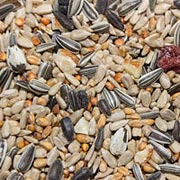 There are lots of different seed mixes available and each will attract a different range of birds. Our personal favourites are sunflower hearts, which are available in most supermarkets, garden centres, and online, and robin peanut cakes, which are similarly available. We’ve found them both to be popular food sources, attracting birds like robins, blue tits, great tits, blackbirds, doves, pigeons, nuthatches, starlings, and more. A small amount of grated cheddar cheese is also very popular, especially amongst robins and blackbirds, but must not be allowed to go mouldy (mouldy cheeses are dangerous for birds). We suggest avoiding mealworms, as each represents a little life lost unnecessarily. In any case, we love minibeasts!
There are lots of different seed mixes available and each will attract a different range of birds. Our personal favourites are sunflower hearts, which are available in most supermarkets, garden centres, and online, and robin peanut cakes, which are similarly available. We’ve found them both to be popular food sources, attracting birds like robins, blue tits, great tits, blackbirds, doves, pigeons, nuthatches, starlings, and more. A small amount of grated cheddar cheese is also very popular, especially amongst robins and blackbirds, but must not be allowed to go mouldy (mouldy cheeses are dangerous for birds). We suggest avoiding mealworms, as each represents a little life lost unnecessarily. In any case, we love minibeasts!
†Peanut Butter, Suet, & Lard Essentials
- If feeding peanuts, use unroasted ones and, to ensure they don’t harm birds, they must be clear of any fungus (usually in the form of dusty spotting on the actual peanuts). If using monkey nuts, break a few open to check.
- Peanut butter should be natural i.e., free of salt, flavouring, sugar, and palm oil.
- If feeding suet, ensure it’s proper beef suet, which is hard and crumbly, not soft and malleable.
- If feeding lard, it should be pure lard, which remains hard even in warmer weather.
- Change bird water regularly and clean feeders, bowls, and baths.
- RSPB guidelines are also available here, and ensure children exercise good hygiene practices.*
You May Also Like …
If you’re little one likes birds, he/she may also be interested in our free bird-spotting poster, available here.
Nature at Little Acorns Nursery, Hindley Green
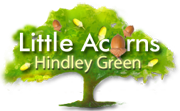 Children get lots of opportunities to spend time around nature and benefit from outdoor play at Little Acorns Nursery in Hindley Green. We’re very lucky to have unusually extensive grounds where children can explore wild zones, nature, and many other outdoor opportunities. Both nature and outdoor play are essential for every child to experience regularly — both are incredibly good for them — so we hope today’s bird feeder activity encourages an even greater interest for our little ones. It will also mean children and families are doing their bit to help birds at a time when food is becoming less abundant in the wild.
Children get lots of opportunities to spend time around nature and benefit from outdoor play at Little Acorns Nursery in Hindley Green. We’re very lucky to have unusually extensive grounds where children can explore wild zones, nature, and many other outdoor opportunities. Both nature and outdoor play are essential for every child to experience regularly — both are incredibly good for them — so we hope today’s bird feeder activity encourages an even greater interest for our little ones. It will also mean children and families are doing their bit to help birds at a time when food is becoming less abundant in the wild.
If you’d like to explore a possible nursery place for your baby, toddler, or child under five at Little Acorns in Hindley Green, do get in touch. We’d love to tell and show you more — please choose an option:
Little Acorns is a nursery in Hindley Green near Wigan, and, as such, may also provide a convenient choice to families nearby in Bolton, Ince-in-Makerfield, Platt Bridge, Westhoughton, Atherton, Leigh, Bickershaw, and Tyldesley.
* Health & Safety Considerations
Always supervise little ones outdoors and when making bird feeders. Encourage good hygiene practices, and be aware of allergens (e.g., nuts) if applicable to you/your child.
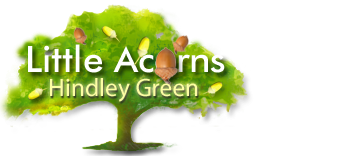
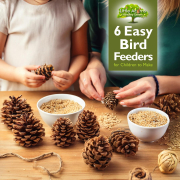
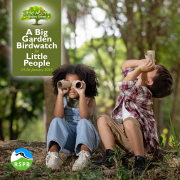

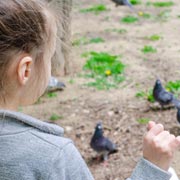 Families, set your diaries for the wildlife event of the year, which happens this January from Friday the 24th to Sunday the 26th inclusive. It’s free, takes just one hour, and allows children and adults to be part of the world’s biggest garden wildlife survey. During the event, families and individuals across the nation simply count the birds they spot in the garden, park, local green space, or even balcony over the course of 60 minutes. The results of hundreds of thousands of these surveys are compiled by the Royal Society for the Protection of Birds (RSPB) to build a picture of the health of the nation’s bird populations. It’s important scientific and ecological work and children can become citizen scientists if they simply take part. Learn more about the Big Garden Birdwatch and how to take part in today’s guide for families with children.
Families, set your diaries for the wildlife event of the year, which happens this January from Friday the 24th to Sunday the 26th inclusive. It’s free, takes just one hour, and allows children and adults to be part of the world’s biggest garden wildlife survey. During the event, families and individuals across the nation simply count the birds they spot in the garden, park, local green space, or even balcony over the course of 60 minutes. The results of hundreds of thousands of these surveys are compiled by the Royal Society for the Protection of Birds (RSPB) to build a picture of the health of the nation’s bird populations. It’s important scientific and ecological work and children can become citizen scientists if they simply take part. Learn more about the Big Garden Birdwatch and how to take part in today’s guide for families with children.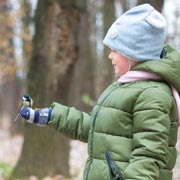 Children will love being involved in this important nature-based activity. They’ll not only play their part in helping birds and nature, but they’ll also have fun and learn something along the way. They will discover some of the many wonderful feathered visitors who live in their neighbourhood and learn about some of the important issues affecting the natural world. They’ll begin to grasp the impact of humans on Britain’s flora and fauna and learn the importance of conservation and looking after the natural world around them. Through this endeavour, they’ll learn how they can make a positive difference. They will also become little citizen scientists! It’s fun, educational, and will give them a wonderful sense of achievement too. It may even change their outlook over the long term and help them think about their own impact on the planet, which is a wonderful outcome. And last but not least,
Children will love being involved in this important nature-based activity. They’ll not only play their part in helping birds and nature, but they’ll also have fun and learn something along the way. They will discover some of the many wonderful feathered visitors who live in their neighbourhood and learn about some of the important issues affecting the natural world. They’ll begin to grasp the impact of humans on Britain’s flora and fauna and learn the importance of conservation and looking after the natural world around them. Through this endeavour, they’ll learn how they can make a positive difference. They will also become little citizen scientists! It’s fun, educational, and will give them a wonderful sense of achievement too. It may even change their outlook over the long term and help them think about their own impact on the planet, which is a wonderful outcome. And last but not least, 
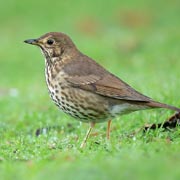 Once the chosen time and date arrive, all you/your children need to do is monitor birds landing on your chosen patch. Count those that actually land rather than any flying otherwise there’s a danger that one bird could be counted multiple times. What you need to record for the survey, though, is the largest number of each bird species that have landed at any one time during the hour. So, for example, if you spot two blackbirds that have landed at the same time in the first half hour, but later in the hour you can see 4 that have landed at the same time, then you need to record “4” for blackbirds.
Once the chosen time and date arrive, all you/your children need to do is monitor birds landing on your chosen patch. Count those that actually land rather than any flying otherwise there’s a danger that one bird could be counted multiple times. What you need to record for the survey, though, is the largest number of each bird species that have landed at any one time during the hour. So, for example, if you spot two blackbirds that have landed at the same time in the first half hour, but later in the hour you can see 4 that have landed at the same time, then you need to record “4” for blackbirds. If you/your child enjoyed this activity, also check out our own free nature guides for little ones. We have
If you/your child enjoyed this activity, also check out our own free nature guides for little ones. We have 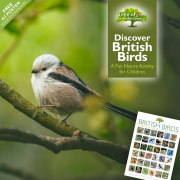
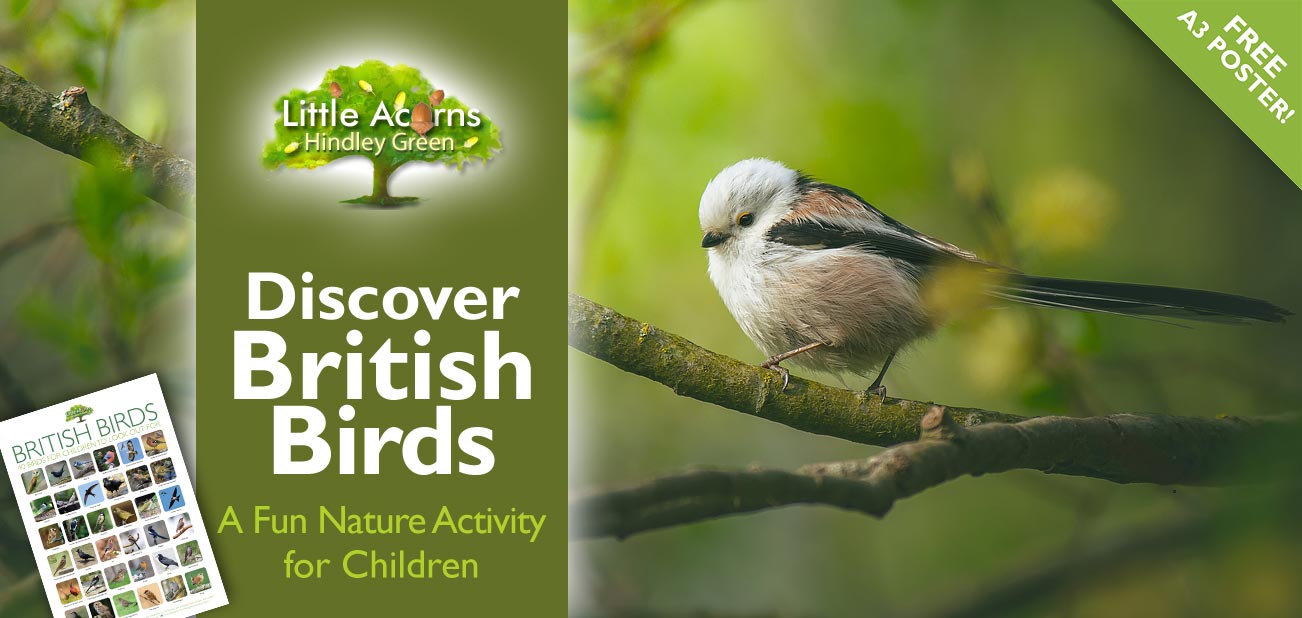
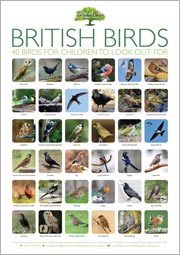 Today, in a follow-up to the
Today, in a follow-up to the 